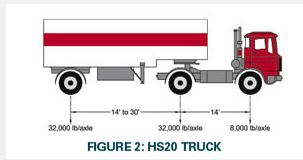I have a 10" thick slab on grade with two mats of #4 @ 12" o.c. each way
from ACI min equations for temp and shrinkage, the slab has equivalent reinforcing.
As(min)=.0018(h)(bw)
I will have larger trucks parking on this slab so I wanted to check for punching shear. assuming a conservative tire contact area of 8"x8", and treating the tire as an interior column, I was able to calculate a design punching shear capacity of 91 kips which I feel is far sufficient for a single tire load.
What I would like to do is provide a PSF rating for the slab. I do not have a soils report but assuming 1500 psf bearing, I know the slab is fine when it comes to bearing pressure.
I know there are a lot of factors in slab design. But what I want to do is provide a conservative rating
I have generous control joints throughout as well
if anyone can help
Same building I have a 8" slab and 6" slab with single mats, I would like ratings for those as well
from ACI min equations for temp and shrinkage, the slab has equivalent reinforcing.
As(min)=.0018(h)(bw)
I will have larger trucks parking on this slab so I wanted to check for punching shear. assuming a conservative tire contact area of 8"x8", and treating the tire as an interior column, I was able to calculate a design punching shear capacity of 91 kips which I feel is far sufficient for a single tire load.
What I would like to do is provide a PSF rating for the slab. I do not have a soils report but assuming 1500 psf bearing, I know the slab is fine when it comes to bearing pressure.
I know there are a lot of factors in slab design. But what I want to do is provide a conservative rating
I have generous control joints throughout as well
if anyone can help
Same building I have a 8" slab and 6" slab with single mats, I would like ratings for those as well

